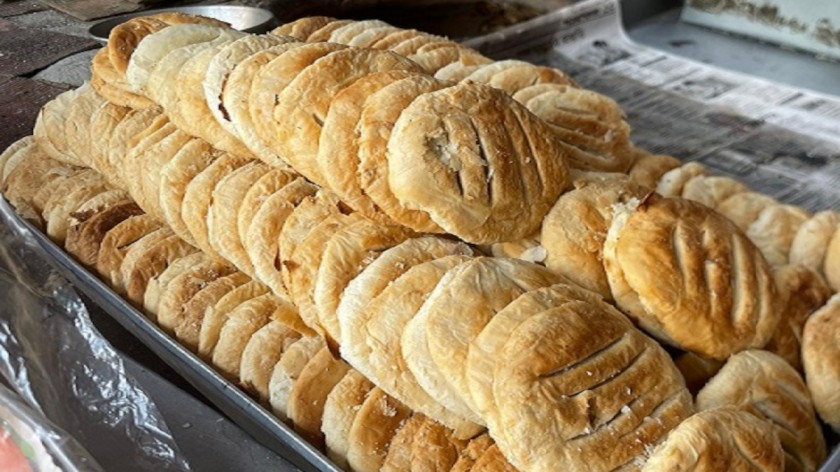The first light creeps through Old Dhaka’s alleyways, carrying whispers of ghee and woodsmoke. Beneath the coming clamor of rickshaws and hawkers, a fragile scent persists – golden, layered Bakarkhani fresh from the tandoor. What vanishes with each passing dawn isn’t merely bread, but the city’s edible memory, crumbling like flaky pastry between modernity’s relentless teeth. Let’s see the history of Bakarkhani and related things in One Light Journal.
A Love Letter in Dough and Ghee
Legend says Bakarkhani was born from a Mughal soldier’s love. Bakar Khan, so devoted to Prince Shah Shuja, had a wife who poured her affection into layered dough – each fold representing another day of waiting, another night of longing. The bread became so cherished that the prince himself demanded it at his table.
But walk through Chawkbazar today and ask about this story. Most shopkeepers will shrug while stacking mass-produced parathas. The romance has evaporated like morning mist over the Buriganga.
The Murder of a Masterpiece
My grandfather could spot fake Bakarkhani blindfolded. “Real Bakarkhani,” he’d say, tapping his walking stick for emphasis, “should shatter like autumn leaves when you break it, then melt on your tongue like winter fog.” He described the making process like a sacred ritual:
- The midnight preparation – Bakers would start when the last evening prayers ended, kneading dough under kerosene lamps
- The layering – Seventy-two folds minimum, each brushed with ghee so pure it smelled like grass-fed cows
- The baking – In tandoors fired with mango wood, giving the bread its signature smoky sweetness
Today? They use cheap margarine, half the layers, and electric ovens. The result? Cardboard with delusions of grandeur.
Breakfast Like We Used to Know It – Bakarkhani
In the 1960s, Dhaka woke up to Bakarkhani. Lawyers at the Judge’s Court nibbled it with malai while debating cases. Dockworkers at Sadarghat dunked it in steaming chai between unloading cargo. My aunt recalls how her father would bring home still-warm Bakarkhani wrapped in newspaper, the ghee staining through the pages like liquid gold.
The combinations were poetry:
- With nimki for contrasting texture
- Paired with zorda (sweet rice) during Eid
- As the base for keema roti when money was tight
Now? We hand our children cereal boxes with cartoon mascots. Progress, they call it.
The Last Guardians of the Craft
At the crumbling end of Nazira Bazar, Haji Mohammad Ali still makes Bakarkhani the old way. His hands, gnarled like banyan roots, work the dough with a rhythm younger bakers can’t replicate. “The kids want to work in mobile shops,” he coughs, flour dusting his beard like premature aging. “Who will remember the seventy-two folds when I’m gone?”
Down the lane, Raju’s Tea Stall still serves the traditional pairing – Bakarkhani with pink sheer chai in dented aluminum cups. But he admits: “We sell ten burgers for every one Bakarkhani now. Even the old men are switching to sandwiches.”
A Resistance Movement, One Bite at a Time
All isn’t lost yet. In pockets of resistance:
- The Dhaka Food Archive documents original recipes
- A handful of elite cafes have started artisanal versions (though at prices that would make our grandmothers faint)
- University food clubs occasionally host Bakarkhani-making workshops
But real change? That requires us:
- Demanding authenticity – Refusing to buy the shortcut versions
- Recording family recipes – Before the keepers of these memories depart
- Making it trendy – If fusion foods can revive kimchi, why not our layered heritage?
Bakarkhani: The Crumbling Legacy of Old Dhaka – Your Burning Questions Answered

The Soul of Dhaka’s Breakfast – What You Need to Know
1. What’s the real story behind Bakarkhani?
Let me tell you what my nani used to say – this isn’t just some bread. Back when Mughal princes ruled Bengal, there was this soldier, Bakar Khan. Story goes his wife would make this incredibly layered bread for him, putting all her love into each fold. The aroma was so divine that Prince Shah Shuja himself demanded to taste it. That’s how it became royal cuisine before trickling down to us commoners.
2. Why can’t I find proper Bakarkhani anymore?
You want the bitter truth?
First off, real Bakarkhani takes:
- 3 hours of kneading and folding (minimum)
- Pure ghee from grass-fed cows
- A wood-fired tandoor that’s been seasoned for years
These new “bakers”? They’re cutting every corner:
✔ Using cheap dalda instead of ghee
✔ Skipping half the layers
✔ Baking in electric ovens that kill the soul of the bread
And don’t get me started on these food delivery apps – they’ve turned our heritage into some mass-produced junk!
3. Where can I still get the real deal?
Listen carefully – these are the last strongholds:
Haji Biriyani (Nazira Bazar)
- Their 5am batch still follows the old recipe
- Comes wrapped in newspaper just like the old days
- Warning: They only make 20-30 pieces daily
Raju’s Tea Stall (Behind Chawkbazar Mosque)
- Served with pink sheer chai in proper brass cups
- The owner’s hands shake while folding the dough – that’s how you know it’s authentic
Pro Tip: Go before 7am or you’ll only get the stale leftovers tourists eat for Instagram photos.
4. How can I spot fake Bakarkhani?
Here’s my foolproof test:
- The Sound Test – Real Bakarkhani cracks like thin ice when you break it
- The Layer Check – Peel it apart – should see at least 50 distinct layers
- The Smell – Should smell like your grandmother’s kitchen, not some factory
If it’s greasy, doughy, or tastes like cardboard? You’ve been scammed.
5. What’s the proper way to eat it?
These kids today don’t know! The OG ways are:
For Breakfast:
- Dunked in sheer chai (must be pink!)
- With a smear of fresh malai cream
For Lunch:
- As the base for spicy keema
- With haleem during Ramadan
Midnight Snack:
- Just plain, letting the ghee flavor shine
6. Can I make it at home?
deep sigh
You can try, but:
- Your arm will give out during kneading
- Home ovens can’t match a proper tandoor
- It’ll take 5 failed attempts before you get close
My dadi’s advice? “Either learn from a ustaz or don’t waste good ghee.”
7. Why should we care about saving it?
Because when we lose foods like this:
- We lose a piece of Dhaka’s soul
- Our children will only know the fake versions
- Another thread connecting us to our history snaps
Next time you’re in Old Dhaka at dawn, follow the ghee-scented air. Buy from the old baker with shaking hands. Taste what real heritage feels like.
Because mark my words – in 10 years? These answers might just become history lessons.
The Clock Is Ticking
Next time you’re in Old Dhaka at dawn, follow your nose. If you catch that caramel-ghee scent wavering through the alleyways like a ghost, consider it an invitation of Bakarkhani. Buy a piece from the oldest baker you can find. Break it slowly. Listen to how it crackles.
That sound? It’s not just layers of dough separating. It’s centuries of history whispering goodbye. Unless we choose to listen. Thanks for staying with One Light Journal.
